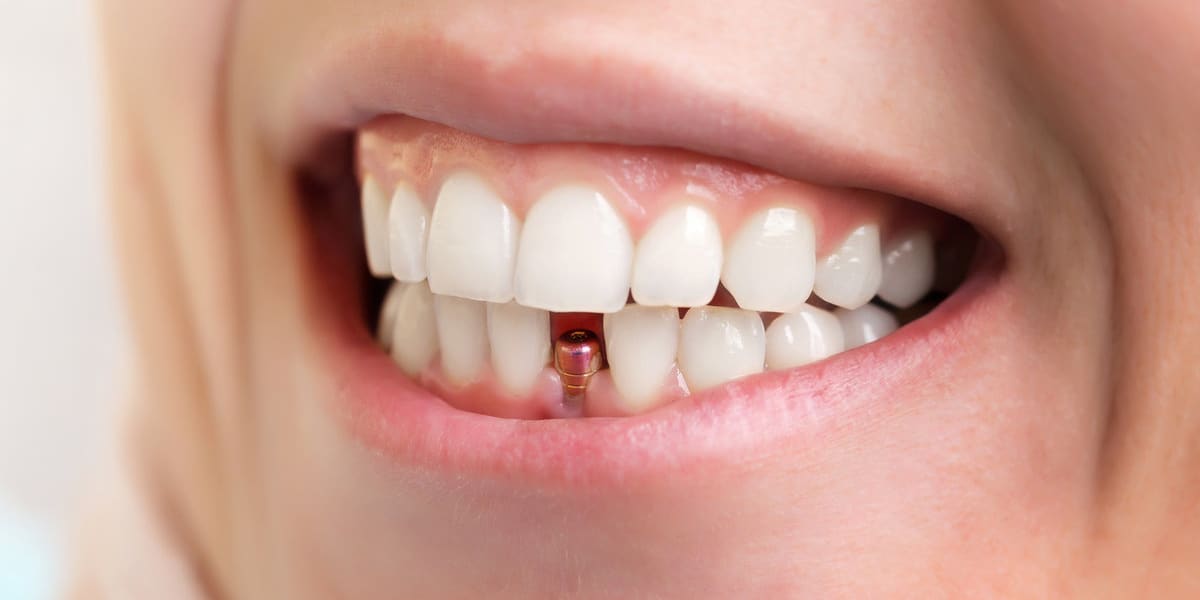
A missing tooth is one of the common reasons why some patients do not reveal their smiles. Especially if the gap is at the front, smiling seems nearly impossible. Sadly, some people find tooth gaps or missing teeth unappealing. There is in fact, an underlying problem with missing teeth other than its looks. Good thing, dental implants are effective tooth replacements letting you keep your confidence and oral health.
Dental implants
Teeth implants are screw-like posts that dentists attach on the jawbone under the gums to act as the new tooth root. On top of the post is an abutment where the dentist can mount the artificial tooth, most likely a crown.
Since the post is attached to the bone, it provides quite a sturdy grip on the artificial bite. Most often, implants are more durable than natural teeth. Aside from the roots, the crown is specially made to look and feel almost like a real bite.
Dentists would recommend a tooth implant for patients who need a reliable replacement after missing a tooth. It’s also best for seniors who seem uncomfortable with loose dentures and need a fixed mechanism to it.
Nevertheless, do patients really need implants?
Why do you need tooth implants?
If gaps between teeth are left open, it allows the other teeth to shift to different positions and would soon result in misalignment. From there, the patient might develop other oral diseases, like tooth decay or infection. Not to mention that the open socket is already susceptible to infection due to bacteria.
If the missing tooth is a molar, the other teeth will shift to the back which could lead to premature ageing. Looking older than your age could be worse than smiling with a missing tooth. Aside from that, gaps in the mouth or loose dentures can create lisps making the patient’s speaking impaired.
Somehow, if there’s no tooth the jawbone begins to deteriorate. It loses its function and becomes frail and will become a reason for failing oral health. A tooth implant procedure will prevent these problems by filling in the missing tooth gap.
This is why the procedure is popular although it is invasive and somehow complex.
The step-by-step dental implants procedure
The dental implants procedure is a rigorous and lengthy procedure to ensure the safety of the patient and the success of the operation. Since it entails multiple procedures other than the implantation itself, it could take months to complete the entire treatment. It also involves invasive procedures that require an oral surgeon to take over with the performance.
Here are the steps following the tooth implant process:
1. Cutting the gum open
Before the dental implants surgery, the surgeon prepares by isolating the operation site and then giving anesthesia to the patient. This helps him relax during the procedure and sleep through it. After the preparation, the oral surgeon will cut the gum open with a scalpel to expose the jawbone underneath it.
2. Drilling into the bone
The goal is to place the implant post in the bone. So, at this time the dentist or oral surgeon will drill a hole on the bone with a dental drill.
3. Placing the implant
Then, the dental post is inserted deep into the bone. This will serve as a tooth root to the replacement dental prosthesis.
4. Temporary denture
At this point, the missing tooth gap is still present because the post is only in level with the gums. If necessary, the dentist will place a temporary and removable denture.
5. Waiting for osseointegration
After the fourth step, the dentist sends the patient home for recovery time. There’s a process during this period they call osseointegration. This process aims to let the dental post fuse with the bone and tissues of the patient to ensure a solid foundation. It might take a few months to succeed with this step before proceeding to the next procedure.
6. Attaching the abutment
Once the osseointegration is complete, the patient returns to have the abutment attached to the implant. The surgeon will reopen the gums and inserts the piece in the implant. Then, he will close the gum tissues surrounding the post but, not over the abutment. By this time, another recovery time takes place.
7. Taking mouth impressions
After two weeks, the gums should have healed and the patient returns. This time, the dentist takes mouth impressions. These impressions are for making the patient’s customized dental crowns.
8. Attaching the new tooth
Once they already have your crowns, it’s time to attach them on top of the implant to complete your new tooth.
It always takes time to achieve a perfect work of art. So, if you have your implants appreciate it and care for it so it lasts forever. Call your Markham dentist now to know the dental implants cost and how you are going to be a candidate for the procedure.


